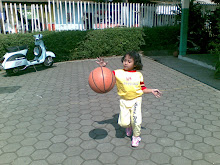Video in Education
The 2008 Horizon Report lists "grassroots video" as the first of it's "key emerging trends" in educational technology. This is both for distance learning and for traditional face to face classrooms open to incorporating distance learning tools into their practice. The popularity of YouTube amongst both adults and children at a level that has been described as "viral" speaks to it's ease of use. A widely cited report on Digital Youth sponsored by the John D. and Catherine T. MacArthur Foundation stated that "Social network sites, online games, video-sharing sites, and gadgets such as iPods and mobile phones are now fixtures of youth culture." The familiarity of YouTube also ensures that when used for educational purposes it will not remain unused due to difficulties in set up or negative reactions to the inclusion of a "new" product with a steep learning curve prior to use.
Some tasks may be easier with some technologies than with others, and thus the introduction of a new technology may inspire certain uses.Yet, these activities become widespread only if the culture also supports them, if they fill recurring needs at a particular historical juncture. It matters what tools are available to a culture, but it matters more what that culture chooses to do with those tools. (Henry Jenkins)
For the most part, YouTube has not yet entirely made the jump from "cultural phenomenom for entertainment" to "respected platform for academic discourse" in the way that products such as iTunes and iTunes University have. (Though there is a site called TeacherTube that acts as a repository for educational videos, it does not have all the functionality of YouTube.) One of the reasons why the video platform may not have gained the academic credibility that iTunes University has may have to do with the video media versus audio media. The adoption of iTunes as a platform for academic and educational materials did not challenge the constructionist (and sadly, often traditional educational) norms of teacher as content expert and the student as passive recipient of information. Lectures and speeches could easily be put into iTunes for students to access at any time and anywhere. Certainly, more constructivist approaches have also emerged in the audio platform that is accorded by iTunes, but the replicating of "taped" lecture was nothing new even if iTunes allows for a more widely distributed audience.
Video, however, may not be an area that teachers are familiar with especially in creating video content that utilizes the visual medium in an asynchronous manner. The need to produce a video over an audio recording suggests that the speaker is doing something more than simply giving a lecture behind a desk. Face to face teachers need to be at least fluent in understanding the ability of how to convey a message effectively through the visual medium of video. The benefit of this fluency is that this powerful medium alllows for asynchronous learning that does not sacrifice the ability for both students and teachers to benefit from non-verbal communication.
Example in Action:
http://www.youtube.com/v/V96_PjlrVQc&hl=en&fs=1
In the YouTube video linked above a teacher uses music, rap and dance to explain fractions in a way that certainly appeals to students differently than would a video of a demonstration at the chalkboard. While this video may have been created for viewing in a face to face classroom, for distance learners, the students might be encouraged to ask their questions either textually or to reflect on their learning by creating a video response or creating their own video explaining a different mathematical concept.










